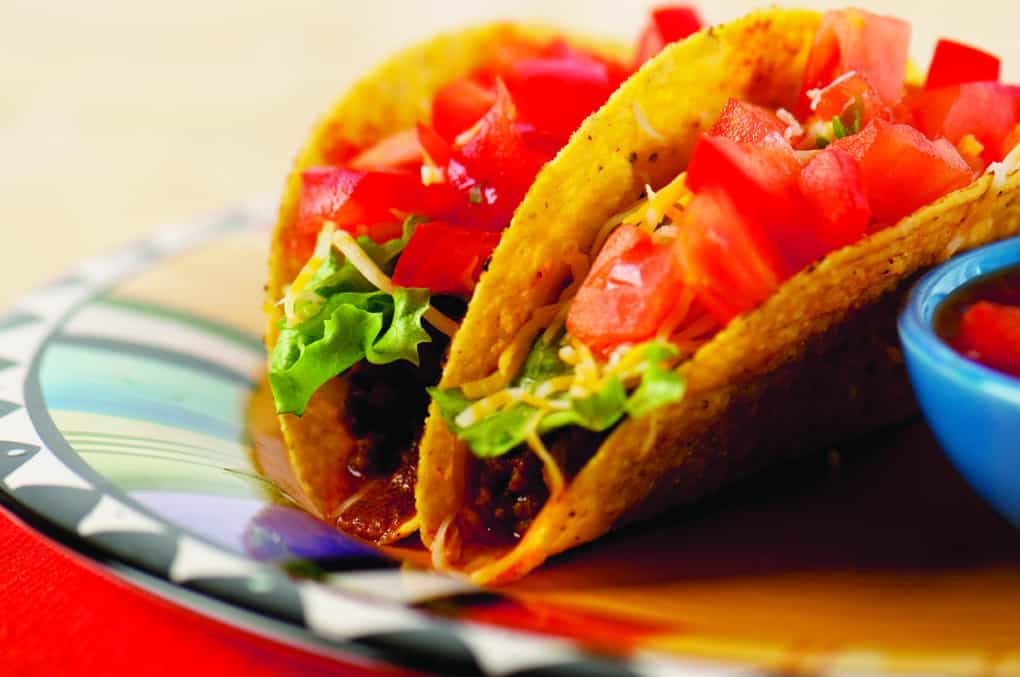
Cultural influences and the more adventurous taste buds of U.S. consumers have made flavors like tikka masala, poblano, and doenjang recognized names on grocery store shelves and restaurant menus, increasing the sales of international foods in the U.S. The affinity U.S. consumers continue to show for ethnic flavors and dishes is supported by the fact that 75% of U.S. adults, especially young adults, are open to trying new foods, reports The NPD Group.
Sales of International Foods: What Americans Want
When consumers dine out they want to see hot, garlic, and spicy flavors and foods on menus. Dollars of total spices and seasonings shipped from broadline foodservice distributors to restaurants and other foodservice outlets increased by 7% versus year ago in the year ending March 2017, according to NPD’s SupplyTrack, a monthly tracking service that tracks every product shipped from major broadline distributors to their foodservice operators.
Many Americans get their first sampling of these flavors while attending ethnic festivals in their hometowns and cities. The new AudienceSCAN study on AdMall by SalesFuel showed 11.1% of U.S. adults want to attend ethnic festivals (Latin, Italian, Irish, Greek, Indian, Asian, etc.) in the next 12 months.
Among the top growing spices and seasonings being shipped to independent restaurants and commercial and non-commercial foodservice outlets are curries, increasing the sales of international foods, examples of which are tikka masala and yellow curry, which grew by 11%, and chili peppers, like aleppo and habanero, which grew by 12%.
Festival promoters can focus on the foods and flavors that represent their cultures in marketing campaigns. Entice them with TV: 39% of Ethnic Festival Attendees took action after seeing commercials in the past month, according to AudienceSCAN survey results.
At home there is a rise in homemade Asian and Hispanic dishes and use of more flavorful items like chili peppers. Mainstream Asian flavors include fish sauce, doenjang, garlic chives, ginger and lapsang souchong, finds NPD’s continual tracking of U.S. consumers’ eating habits. Among the growing and emerging Asian flavors that are increasing the sales of international foods in the U.S. are Asian pear, galangal, lychee, mango, and papaya. When it comes to Hispanic flavors jalapeno, habanero, ghost pepper, and mole negro are mainstream. Hibiscus, dragon fruit, mammee, and bitter orange are among the emerging and growing Hispanic flavors and foods found in U.S. kitchens.
Oftentimes, festivals will include cooking demonstrations. Directors can promote these to get the foodies to come out in droves. The AudienceSCAN study found 40% of Ethnic Festival Attendees took action after checking their mailboxes for ads and coupons.
“The growing Asian and Hispanic populations in the U.S. have introduced new flavors into the American diet and many of these flavors are now mainstays in our kitchens and on menus,” says Ann Roberts, vice president, SupplyTrack. “There are also new flavors and flavor profiles emerging and growing, which makes it important for distributors, manufacturers, and foodservice operators to understand the impact of ethnic cultures and their related flavors in order to recognize growth opportunities.”
